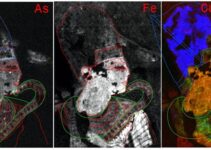The mechanism by which memory is produced and stored in the brain is still uncertain. mRNA, a type of RNA involved in the production of proteins, is well known to be produced during the formation and storage of memories. Still, the technology for investigating this process at the cellular level has been limited. In earlier research, the brains of mice were frequently dissected and examined.
A team of researchers led by a University of Minnesota Twin Cities faculty member has developed a new technique that gives scientists a window into RNA synthesis in the brain of a mouse while it is still alive. The method allows scientists and engineers to visualize mRNA molecules in the brains of living mice.
Hye Yoon Park, an associate professor in the University of Minnesota Department of Electrical and Computer Engineering and the study’s lead author, said, “We still know very little about memories in the brain. It’s well known that mRNA synthesis is important for memory, but it was never possible to image this in a live brain. Our work is an important contribution to this field. We now have this new technology that neurobiologists can use for various experiments and memory tests in the future.”
The new process involved genetic engineering, two-photon excitation microscopy, and optimized image processing software. They started by genetically modifying a mouse to produce mRNA labeled with green fluorescent proteins. This allowed them to observe when and where the mouse’s brain generated Arc mRNA, the specific type of molecule they were looking for.
The fact that the mouse is alive allowed scientists to conduct a more extensive investigation. The scientists conducted two studies on the mouse using this new method, allowing them to observe in real-time what the neurons—or nerve cells—were doing over a month as the mouse created and stored memories.
Neuroscientists have long hypothesized that specific neural networks fire in the brain during the formation of memories and then again during the recall of those memories. But in both studies, the scientists determined that separate neural networks fired on various days to activate the mouse’s memory.
Several days after the mouse created this memory, they could locate a small group of cells that overlapped or consistently generated the Arc mRNA each day in the brain’s retrosplenial cortex (RSC) region. This group, they believe, is responsible for the long-term storage of that memory.
Park said, “Our research is about memory generation and retrieval. If we can understand how this happens, it will be very helpful for us in understanding Alzheimer’s disease and other memory-related diseases. Maybe people with Alzheimer’s still store the memories somewhere—they can’t retrieve them. So in the very long-term, perhaps this research can help us overcome these diseases.”
Journal Reference:
- Byung Hun Lee et al. Real-time visualization of mRNA synthesis during memory formation in live mice. Proceedings of the National Academy of Sciences. DOI: 10.1073/pnas.2117076119


